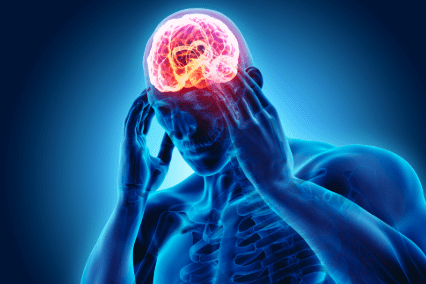The human body is an intricate network of systems, each working tirelessly to maintain harmony and health. Among these systems, the blood serves as a vital transporter, carrying nutrients, oxygen, and signals to every cell. Equally important, blood acts as a stabilizer, maintaining the body’s internal environment within precise limits. One of the critical aspects of this internal balance is pH regulation, and blood filtration plays a central role in ensuring it remains stable. Understanding how this process works can reveal just how sophisticated and efficient the body’s natural mechanisms truly are.
Blood pH measures how acidic or alkaline the blood is, with the ideal level resting slightly on the alkaline side at about 7.35 to 7.45. Even minor fluctuations outside this range can interfere with normal cellular processes, enzyme function, and overall metabolism. This delicate balance is under constant threat from everyday activities such as eating, drinking, breathing, and even physical exertion, which introduce acids or bases into the bloodstream. To counter these shifts, the body relies on specialized filtration mechanisms primarily managed by the kidneys, with support from the lungs and chemical buffer systems in the blood.
At the forefront of pH regulation are the kidneys. These small, bean-shaped organs filter blood continuously, selectively removing excess hydrogen ions, which are acidic, and reabsorbing bicarbonate ions, which act as natural buffers. By excreting hydrogen ions into urine and retaining bicarbonate, the kidneys can neutralize excess acidity and prevent the blood from becoming too acidic, a condition known as acidosis. Conversely, if the blood becomes too alkaline, the kidneys can reduce bicarbonate reabsorption and retain hydrogen ions, gently nudging the pH back toward the normal range. This dynamic adjustment is a remarkable example of the body’s ability to maintain internal stability, or homeostasis.
While the kidneys manage long-term pH regulation, the lungs play a complementary role in rapid adjustments. When blood becomes too acidic, the respiratory system increases the rate and depth of breathing, expelling more carbon dioxide. Since carbon dioxide reacts with water in the blood to form carbonic acid, removing it helps lower acidity. Conversely, slower breathing retains carbon dioxide, allowing the blood to become slightly more acidic if necessary. Although this respiratory contribution is not technically part of blood filtration, it highlights the interconnected nature of the body’s pH control mechanisms, with filtration in the kidneys serving as the foundation for sustained balance.
Blood itself contains buffer systems that act as immediate responders to pH fluctuations. The bicarbonate buffer system is the most significant, operating as a chemical safeguard against rapid changes in acidity. When acids enter the bloodstream, bicarbonate binds to them, forming carbonic acid, which can then be converted into water and carbon dioxide and safely removed via the lungs. Similarly, if the blood becomes overly alkaline, carbonic acid releases hydrogen ions to restore balance. These buffer systems work hand in hand with filtration processes, ensuring that the pH remains within the narrow optimal range essential for healthy cellular function.
Diet and lifestyle also influence blood pH, although the body’s filtration systems are adept at compensating for most variations. Consuming foods rich in proteins, particularly animal proteins, generates acids in the bloodstream that the kidneys must neutralize. Fruits and vegetables, on the other hand, tend to produce alkaline byproducts that can shift the balance in the opposite direction. By consistently filtering and adjusting the components of blood, the kidneys and associated systems prevent these dietary influences from disrupting overall pH balance, allowing cells to operate efficiently.
An interesting aspect of kidney filtration is its selective nature. The kidneys do not merely remove waste indiscriminately; they carefully monitor the blood’s chemical composition. Sensors in specialized regions of the kidneys detect changes in pH and trigger adaptive responses. For example, if hydrogen ion levels rise, the kidneys increase their secretion into urine, often alongside phosphate and ammonium ions that help neutralize acidity. If pH trends toward alkalinity, reabsorption of bicarbonate is reduced, while hydrogen ions are conserved. This precision ensures that the body maintains equilibrium without overcorrecting, a subtle but crucial aspect of overall health.
Beyond filtering out hydrogen ions and managing bicarbonate, kidney filtration affects electrolyte balance, which indirectly supports pH regulation. Sodium, potassium, and calcium levels are carefully controlled during filtration, influencing acid-base chemistry in the blood. For instance, high potassium levels can signal the kidneys to excrete hydrogen ions more aggressively, while low sodium can reduce the body’s ability to excrete acid. This interconnected system highlights the sophistication of blood filtration as not merely a waste removal process but a fundamental mechanism that sustains life at the cellular level.
When kidney function is compromised, pH balance can be disrupted, leading to serious health consequences. Conditions such as chronic kidney disease can reduce the ability to excrete hydrogen ions and reabsorb bicarbonate effectively. This imbalance often results in metabolic acidosis, which can cause fatigue, muscle weakness, and even more severe complications if left untreated. Maintaining healthy kidney function is therefore essential not only for eliminating waste but also for regulating the precise chemical environment the body needs to thrive.
Practical steps can support the natural blood filtration process and, by extension, pH balance. Staying well-hydrated ensures that kidneys can efficiently remove acids and other waste products. A balanced diet rich in fruits, vegetables, and moderate protein intake can reduce unnecessary stress on filtration systems. Regular physical activity promotes healthy circulation and metabolic efficiency, indirectly supporting acid-base balance. Additionally, avoiding excessive intake of substances that challenge kidney function, such as high levels of sodium or processed foods, can protect the filtration system over the long term.
The elegance of blood filtration lies in its continuous, often unnoticed work. Every day, the kidneys filter hundreds of liters of blood, carefully adjusting hydrogen ion levels and bicarbonate to keep the internal environment stable. This ongoing process allows other organs and systems to operate under optimal conditions, supporting energy production, immune function, and overall vitality. The seamless coordination between the kidneys, lungs, and blood buffer systems ensures that even when faced with dietary, environmental, or metabolic challenges, the body maintains its delicate pH balance.
In essence, blood filtration is more than just waste management; it is a cornerstone of life-sustaining chemistry. The kidneys act as vigilant guardians, the lungs as responsive partners, and blood buffers as rapid responders, all working together to prevent dangerous shifts in acidity. By understanding and appreciating these natural processes, we gain insight into the remarkable self-regulating capabilities of the human body. Protecting and supporting these systems through healthy habits ensures that blood filtration continues to perform its vital role, keeping pH levels stable and promoting long-term health and well-being.






